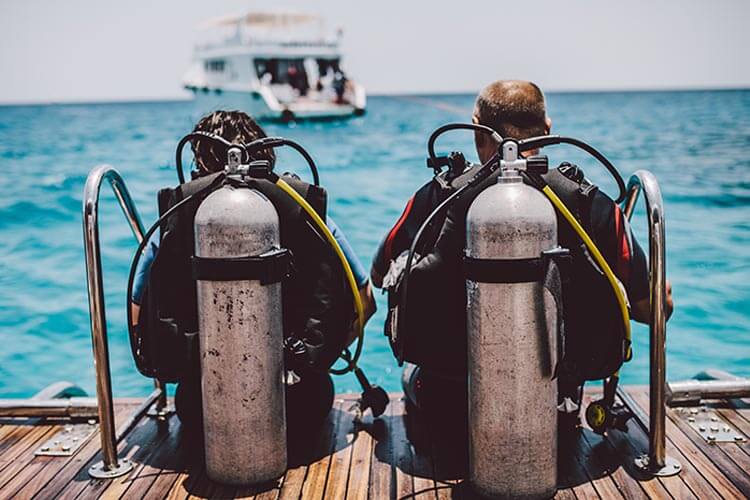
As with all scuba diving gear – there are a lot of different choices on today’s market, so let’s take a look at some of the considerations involved in buying your first BCD
Broadly speaking, Buoyancy Control Devices (BCDs) – or Buoyancy Compensators (BCs), can be split into four categories: jackets, wings, hybrids (or back-inflate, a combination of the two), and the increasingly popular side-mount harness.
There is a lot of debate about which is better but the most basic principles apply to all forms of BCD: they must be able to support you both underwater and at the surface, they must be a good fit, and they must be comfortable both to wear and to operate.
A poorly-fitting device of any flavour will create havoc with your buoyancy and trim, be exceedingly uncomfortable and – in extreme cases – potentially very dangerous.
Buying your first dive equipment series:
Jackets, wings, hybrids and sidemount – what are they?
Jackets:

Most people learn to dive in a jacket-style BCD; by far and away the most common form of recreational buoyancy control device. It has been the tried-and-tested mainstay of the scuba diving industry for the better part of half a century and most recreational dive professionals would recommend a jacket-style BCD as a first-time purchase.
Pros: Comfortable, familiar, easy to use, storage pockets, padding, upright surface position
Cons: Imprecise weighting leads to poor trim; fewer options for customisation; bulky
Backplate and wing:

The backplate-and-wing style BCD is often thought of as technical dive gear – for which they are all but essential – but they are equally at home in the recreational dive world, although it is rare for them to be introduced at entry-level within the context of the resort-based recreational diving business. Some ‘experts’ will tell you that ONLY wings can give you perfect control over your buoyancy and trim – which is simply not true – but used correctly, they can greatly assist with both.
Pros: More customisable than jackets (eg swapping between a single or twin-tank setup); more streamlined; improved body position and buoyancy control
Cons: Require extra training for use; can be uncomfortable/push forward at the surface; lack of storage
Back-inflate/hybrid:
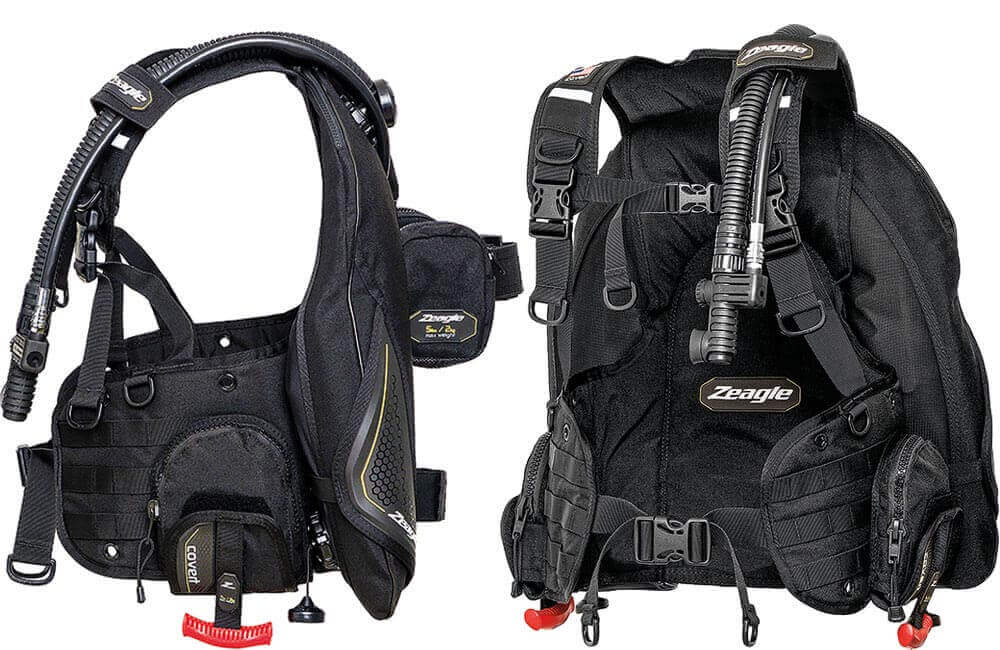
Essentially, the best of both worlds of jackets and wings – the rear-mounted, often doughnut-shaped bladder assists with body position and streamlining, while the front usually has the padded straps and pockets of a regular jacket, but without the wrap-around bladder
Pros: A good halfway house between jackets and wings; improved body position; storage
Cons: not as customisable as a backplate/wing; single-tank only; can push you forward at the surface.
Sidemount:

An increasingly popular setup for diving, sidemount harnesses are small bladders with no rear mounting for tanks, which are instead slung under the arms of the diver, creating a much lower profile than back-mounted tanks and providing easy access to the tank’s valves. Very popular for cave and wreck divers, but requires training and equipment rarely offered with entry-level courses.
Pros: streamlined, low-profile, lightweight (without tanks); great for divers of shorter stature or those with back injuries
Cons: requires sidemount-specific/modified regulators; requires training over and above entry-level; not to everybody’s taste.
So, which BCD to buy as your first purchase?
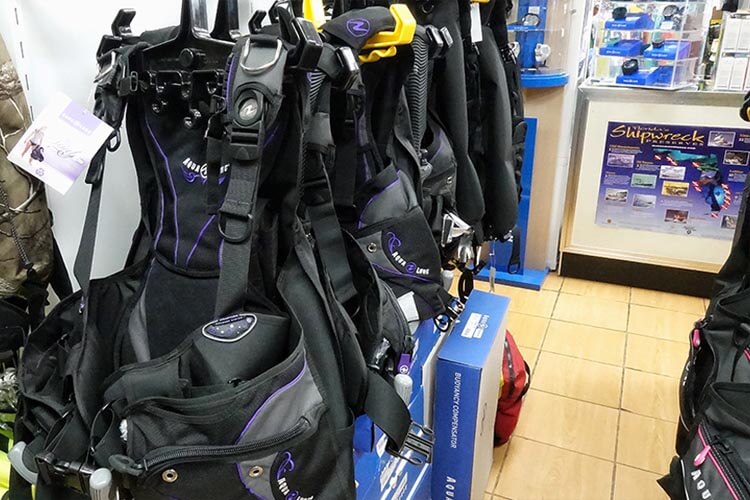
Short answer: the style of BCD you are most familiar with, through prior training and experience with rental equipment.
The vast majority of divers learn to dive in a jacket-style BCD, so that is top of the list for an entry-level first purchase; divers with a bit more experience should have little problem adjusting to a back-inflate/hybrid style BCD – although be prepared to face-plant a few times at the surface on first use.
Wings would only be recommended as a first purchase for divers who either used them during training or have otherwise undertaken a thorough familiarisation in their use; sidemount requires supervised training for all but the most experienced divers.
Important considerations when buying a BCD:
Fit and comfort
One of the most important considerations when buying a BCD is its fit, and it is essential that – unless you know precisely what you want based on prior experience – you visit a local dive shop for fitting.

Be aware that the size on the label of the best-fitting BCD may not be the same size in which you buy your t-shirts, as BCD manufacturers compensate for the various thicknesses of exposure suit a diver might wear, which can add several inches to your chest size.
For example, I am technically a size ‘Large’ for t-shirts, but a few extra dinners here and there and I wear almost exclusively XL-sized shirts. Of the four BCDs I have personally owned, however, three were size Medium and one was a size Small!
By and large, a correctly-fitting BCD will support a diver adequately at the surface, however, if you will be diving in thick wet/dry suits – or are of a larger disposition and require extra weights to compensate – then you need a BCD which will support both you and the extra lead at the surface. Check with your dive shop expert to make sure a BCD’s bladder size and lift capacity meet your requirements.
Ladies sizings

Many buoyancy devices are unisex affairs, but most manufacturers now have ranges of jackets specifically tailored towards ladies. Women, on average, have slightly shorter spines than men when compared to overall body length, so the shorter backplate may assist with tank and weight placement, and different configurations and routing of the BCD’s chest and shoulder straps may be more comfortable across the chest.
Travel
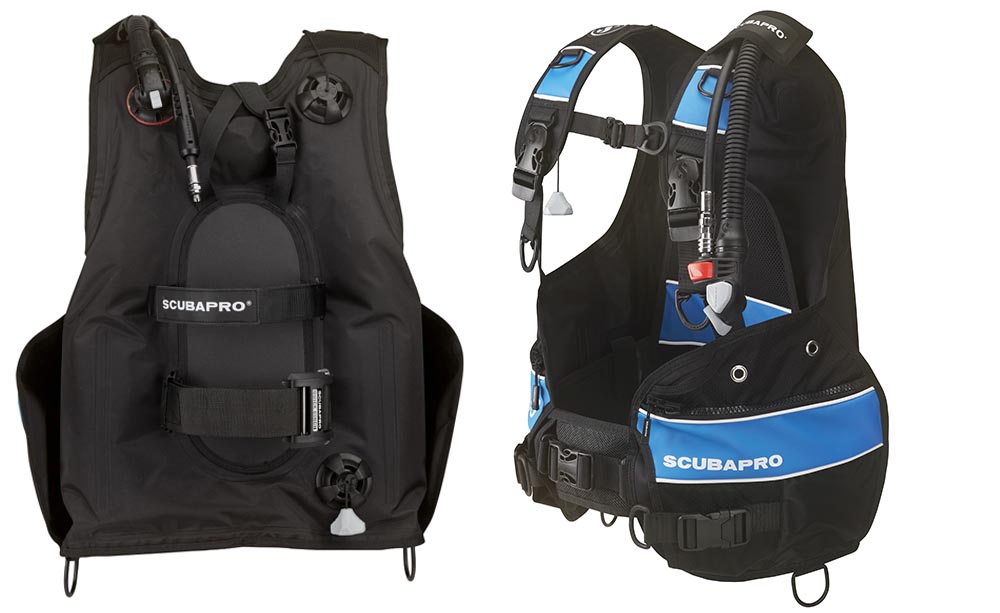
Travel BCDs are very popular, but some material is sacrificed to make them lightweight and they may not be as robust as a standard item. If you’re going to be diving a few times every year in the tropics then they make an excellent choice to defeat the airline baggage charges, but for more regular diving and more challenging environments, they lose their benefits in terms of durability and range of use.
Integrated weights and trim pockets
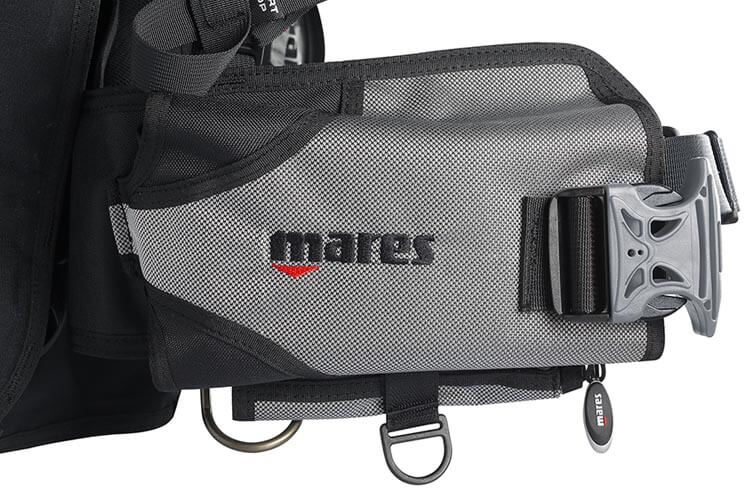
Some people love integrated weights, some people really don’t. The main benefit for most divers is that they find them more comfortable than weight belts, but some divers find that they limit the options for weight distribution.
Some BCDs have ‘trim pockets’ where you can place single weights around the shoulders or kidneys to assist with your position in the water – others have an option to strap extra weights to your tank. It’s difficult to know in advance if they would be useful to a diver or not, but having them available to aid with weight distribution as you gain more experience may well be an advantage.
Other features
D-rings, knife attachment grommets and pockets vary between models, but consider what type of diving you do and what you will need them for – somewhere to clip an SMB and reel, your camera, torch, slates….
If everything you carry is small and lightweight then plastic D-rings (common on travel BCDs) will be fine, but metal is better for larger and heavier items. Most jacket-style BCDs have side pockets and most hybrids have similar – but often smaller – options for storage. It’s up to you, although you may wish to consider that zipped pockets might be better for heavy or expensive objects than those made with Velcro.
In conclusion – buying your first BCD
As you can see, there are a lot of options available when buying a BCD. For your first purchase, however, consider what you really need and base your decision around what you already know.
Don’t be sold on a particular style just because somebody on the Internet said it was better – it may be for them, but not you – and unless you know exactly what you need, make sure you go to a dive shop for a proper fitting and best advice.


